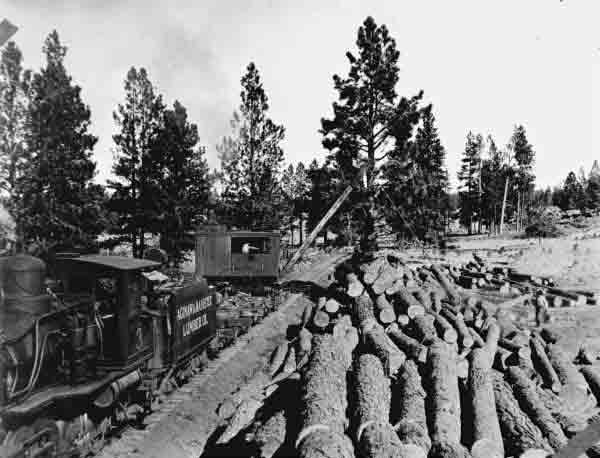“Seeing wealth in the stands of Ponderosa pine that grew on the North and South Rims, loggers moved onto the plateau with their saws and axes in the 1870s. Flagstaff and Williams, today two of the largest communities in northern Arizona, emerged as a result. Not coincidentally, both towns were built using the trees of the South Rim forests. Likewise, the North Rim forests provided lumber to build the Mormon settlements of Kanab and St. George, Utah.”
Barbara Morehouse, A Place Called Grand Canyon
In 1893, President Benjamin Harrison withdrew a large section of the Grand Canyon from private settlement and reserved it for the public. Read the proclamation that established the Grand Canyon Forest Reserve here: http://www.presidency.ucsb.edu/ws/index.php?pid=71167
Twelve years later, President Theodore Roosevelt expanded the Grand Canyon Forest Reserve. Read his proclamation here: http://www.presidency.ucsb.edu/ws/index.php?pid=69559
In 1905, all of the Forest Reserves, including the Grand Canyon Forest Reserve, came under the control of the newly established U.S. Forest Service (USFS), an agency housed in the Department of Agriculture. Congress renamed the reserves “National Forests” in 1907. Charged with managing these publicly-owned forests for productive but sustainable use, the USFS supervised commercial logging activities in the forests that surround the Grand Canyon in northern Arizona and southern Utah for the rest of the twentieth century. The creation of the Grand Canyon National Park in 1919 halted timber harvesting within the park’s boundaries, but logging continued on national forest lands adjacent to the Park. To read more about land ownership at the Grand Canyon and how it has changed over time, see: www.grandcanyonhistory.clas.asu.edu
“The Saginaw Lumber Company organized in 1894 and built a mill at Williams. Temporary railroads operated just south of the national park boundary during the 1920s. Lumbermen hauled logs on ‘logging wheels’ to a scattered network of hastily laid tracks, then loaded flat cars using hoists. Locomotives pulled the cargo back to the Grand Canyon Railway near Anita for transport to the mill.”
Michael Anderson, Living at the Edge
The national forests closest to the Grand Canyon are the Kaibab [link to Kaibab National Forest] and the Coconino, currently part of the Southwestern Region of the USFS. Read more about the forests and their histories here: http://www.fs.fed.us/r3/about/history/index.shtml





